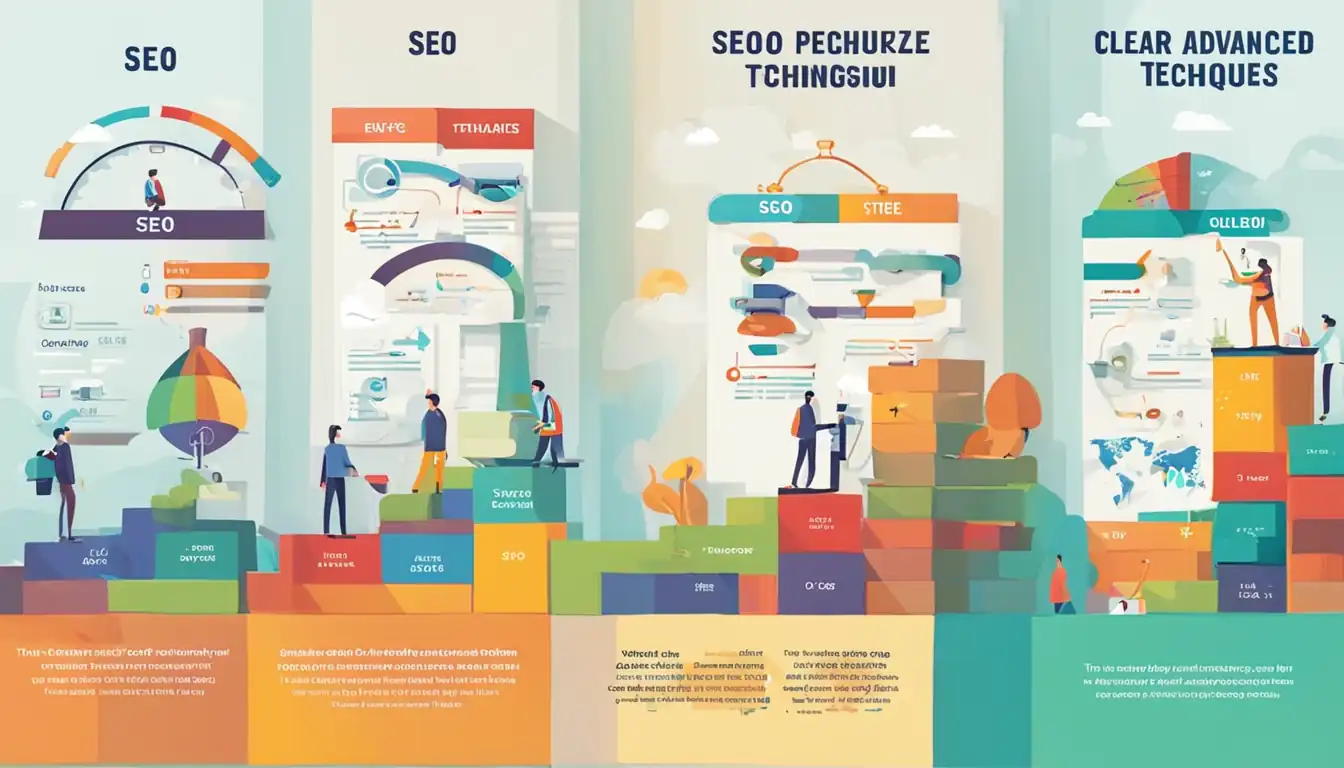Mastering SEO Content Title Optimization

Welcome to the world of SEO content title optimization! In this post, we will delve into the art and science of crafting titles that not only catch the eye but also boost your search engine rankings. Whether you're a seasoned SEO pro or just dipping your toes into the digital marketing waters, mastering title optimization is essential for driving traffic to your website. So grab a cup of coffee, sit back, and let's explore how you can take your title game to the next level.
Understanding the Basics of SEO Title Optimization

In the world of SEO, the title of your content plays a crucial role in determining its visibility and ranking on search engine results pages. Mastering SEO title optimization is essential for driving organic traffic to your website and increasing your online presence.
What Makes a Good SEO Title
A good SEO title is concise, descriptive, and relevant to the content it represents. It should accurately reflect the topic of the page while also enticing users to click through. A well-crafted title can improve click-through rates and ultimately boost your search engine rankings.
When creating an SEO title, consider the following elements:
- Length: Keep your titles under 60 characters to ensure they display fully in search results.
- Relevance: Make sure your title accurately reflects the content on the page.
- Engagement: Use compelling language to entice users to click on your link.
- Uniqueness: Avoid duplicating titles across multiple pages on your site.
The Role of Keywords in Titles
Keywords play a crucial role in optimizing SEO titles. By including relevant keywords in your titles, you can signal to search engines what your content is about and improve its chances of ranking for those terms. However, it's important to use keywords naturally and avoid keyword stuffing, as this can harm your rankings.
When incorporating keywords into your titles, consider the following tips:
- Placement: Place important keywords near the beginning of your title for maximum impact.
- Variety: Use a mix of primary and secondary keywords to capture a broader range of search queries.
- Long-tail Keywords: Consider using long-tail keywords for more specific targeting and less competition.
- Testing: Monitor the performance of different keyword variations to see which ones resonate best with your audience.
By understanding these basic principles of SEO title optimization and implementing them effectively, you can enhance the visibility and relevance of your content in search engine results pages. Mastering this aspect of SEO will help drive organic traffic to your site and improve overall user engagement.
Crafting Catchy and Effective Titles
Crafting catchy and effective titles is crucial in SEO content optimization. A well-crafted title not only grabs the reader's attention but also improves search engine visibility. Here are some key strategies to master title optimization:
Balancing Creativity with Clarity
When crafting titles, it's important to strike a balance between creativity and clarity. While a creative title can attract readers, it should also clearly convey the topic of the content. Avoid using vague or misleading titles that may confuse readers or search engines.
Using Power Words to Boost Engagement
Incorporating power words in your titles can significantly boost engagement. Power words are persuasive terms that evoke strong emotions and compel readers to take action. Examples of power words include "ultimate," "essential," "proven," and "exclusive." By strategically using these words in your titles, you can increase click-through rates and improve overall SEO performance.
Remember, mastering SEO content title optimization requires continuous testing and refinement. Stay updated on industry trends and algorithm changes to ensure your titles remain effective in driving traffic and engagement.
Technical Aspects of Title Optimization
Optimal Length for Search Engines
When crafting titles for SEO content, it is crucial to consider the optimal length for search engines. While there is no definitive character limit set in stone, it is generally recommended to keep titles under 60 characters to ensure they are fully displayed in search engine results. Titles that exceed this limit may get truncated, potentially affecting their click-through rates.
Impact of Title Tags on SEO Rankings
Title tags play a significant role in SEO rankings as they provide search engines with context about the content of a webpage. Including relevant keywords in title tags can help improve visibility and attract organic traffic. Additionally, well-crafted title tags can enhance user experience by accurately representing the content of a page. It is essential to optimize title tags with targeted keywords while maintaining readability and relevance to maximize SEO impact.
Tools and Techniques for Title Creation
In the world of SEO content optimization, creating compelling titles is crucial for attracting both search engine algorithms and human readers. Here are some tools and techniques to help you master the art of title optimization.
Popular SEO Tools for Title Analysis
Google Keyword Planner: This tool helps you identify relevant keywords and phrases that can be incorporated into your title to improve its visibility in search results.
SEMrush: SEMrush provides valuable insights into keyword competitiveness, search volume, and trends, allowing you to craft titles that resonate with your target audience.
Moz Title Tag Preview Tool: This tool allows you to preview how your title will appear in search engine results pages (SERPs), helping you optimize it for maximum click-through rates.
Ahrefs: Ahrefs offers comprehensive keyword research data and competitive analysis tools that can guide you in crafting titles that outperform your competitors.
Tips for Using Analytical Data in Titling
Identify High-Volume Keywords: Use keyword research tools to find high-volume keywords related to your content topic and incorporate them strategically into your title.
Analyze Competitor Titles: Study the titles of top-ranking pages for your target keywords to understand what works well in your niche and adapt those strategies for your own titles.
Test Different Variations: Experiment with different title variations using A/B testing or by monitoring performance metrics to determine which titles drive the most traffic and engagement.
Consider User Intent: Craft titles that align with user intent by addressing their needs, questions, or pain points, increasing the likelihood of attracting qualified traffic to your site.
Keep Titles Concise and Descriptive: Aim for clear, concise titles that accurately reflect the content of your page while also enticing users to click through from search results.
By implementing these tools and techniques effectively, you can optimize your SEO content titles to enhance visibility, attract organic traffic, and ultimately drive success in your digital marketing efforts.
Real-World Examples and Case Studies

Analysis of Top-Performing Titles in Various Industries
When it comes to mastering SEO content title optimization, analyzing real-world examples and case studies can provide valuable insights into what works best. By studying the top-performing titles in various industries, you can identify common trends and strategies that lead to success. Here are a few key takeaways from analyzing top-performing titles:
Relevance: The most successful titles are highly relevant to the content they represent. They clearly communicate what the reader can expect to find in the article or webpage.
Keywords: Effective titles incorporate relevant keywords that help improve search engine rankings. However, it's important to avoid keyword stuffing, as this can have a negative impact on SEO.
Engagement: Engaging titles that spark curiosity or evoke emotion tend to perform well. Consider using power words or asking a question to draw readers in.
Length: While there is no one-size-fits-all rule for title length, studies have shown that shorter titles (around 50-60 characters) tend to perform better in search results.
By analyzing top-performing titles in various industries, you can gain valuable insights into what strategies work best for optimizing SEO content titles.
Lessons Learned from Failed Title Optimizations
In addition to studying successful examples, it's also important to learn from failed title optimizations. Understanding why certain titles didn't perform well can help you avoid making similar mistakes in your own content strategy. Here are some common lessons learned from failed title optimizations:
Lack of Clarity: Titles that are vague or unclear about the content they represent often fail to attract readers' attention. Make sure your title clearly communicates what the reader can expect.
Overly Generic: Generic titles that lack specificity or uniqueness may get lost among competitors in search results. Aim for a unique angle or perspective when crafting your title.
Ignoring User Intent: Failing to consider user intent when crafting a title can result in low click-through rates. Make sure your title addresses the needs and interests of your target audience.
Neglecting A/B Testing: Without testing different variations of your title, you may miss out on opportunities to optimize performance. A/B testing can help you identify which titles resonate best with your audience.
By learning from failed title optimizations and understanding common pitfalls, you can refine your approach to SEO content title optimization and improve your chances of success in driving organic traffic to your website.
Conclusion
And there you have it - a comprehensive guide to mastering SEO content title optimization. By understanding the basics, crafting catchy titles, paying attention to technical aspects, utilizing tools and techniques, and learning from real-world examples, you'll be well on your way to creating titles that drive traffic and engage your audience. So go ahead, put these strategies into practice, experiment with different approaches, and watch as your search engine rankings soar. Happy optimizing!